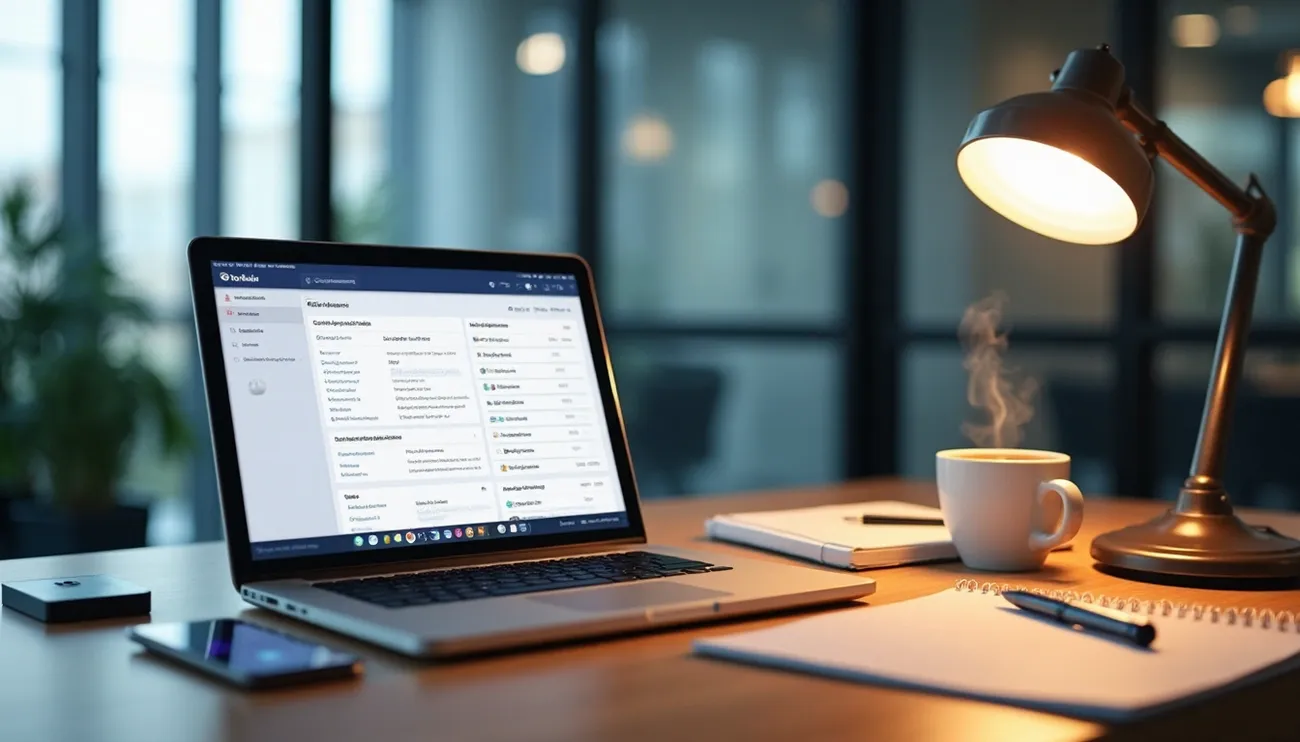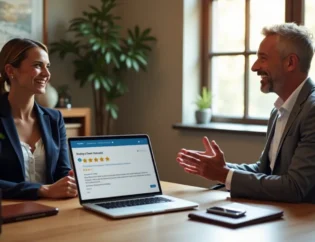
Why Your Consulting Email Marketing Isn’t Working (+ How to Fix It)

Email marketing brings in $42 for every $1 spent. This makes consulting email marketing one of the most effective ways to grow your business development arsenal. Many consultants fail to achieve meaningful results from their campaigns despite this remarkable potential.
The number of subscribers doesn’t always determine success. A client from our Clarity Coaching Program proves this point. They work solo with just 7 email subscribers yet bring in over half a million dollars yearly. Success comes from the right approach rather than subscriber count. Research reveals that 90% of clients rank communication frequency as crucial when they decide to stay with an advisor and make referrals. Most clients (72%) prefer to receive their advisor’s views through email instead of phone calls.
This piece gets into why your consulting email marketing efforts might not work well. You’ll learn practical ways to improve your outcomes. We’ll show you how to build email campaigns that connect with ideal clients and stimulate business growth through better list quality and personalization techniques.
Why Most Consulting Email Marketing Fails
Email marketing creates problems for many consultants who make basic mistakes that hurt their campaigns. A good grasp of these common issues helps create better campaigns that work.
Focusing on list size over list quality
Building massive email lists often backfires for consultants. Small, well-targeted email lists perform better than large, uninterested audiences. Poor campaign results often stem from prioritizing numbers instead of engagement. Buying email lists puts your account at risk of getting flagged. This practice also breaks GDPR and other privacy regulations.
Sending generic, non-targeted messages
Sending identical messages to everyone feels like yelling from a mountaintop – someone might hear you but real connections never happen. Most consultants don’t segment their audiences properly. This wastes chances for personal touches that could make results better. Targeted emails get substantially higher click-through rates because they speak to specific client needs.
Lack of clear call-to-action in emails
Emails without clear call-to-action (CTA) leave clients unsure what to do next. People need specific guidance about their next steps. Research shows vague prompts like “submit” or “click here” don’t drive action – this stands out as the most common CTA mistake. Your CTA should make the desired action simple for prospects.
Inconsistent email frequency
The right timing of consulting emails plays a vital role in keeping people engaged. Too few messages make prospects forget you exist. Too many create email burnout. Numbers show irregular email schedules lead to a 125% higher unsubscribe rate (0.9%) compared to steady daily or weekly emails (0.4%). The core team of successful consultants stick to predictable schedules that keep them relevant without becoming annoying.
These four improvements can substantially boost your consulting email marketing results and create lasting client relationships.
Types of Emails That Actually Work for Consultants
Consultants who succeed know they must send the right type of email at the right time. Here are four types of emails that bring results for consulting businesses.
Weekly content updates to build trust
Regular content emails make you an intellectual influence and keep your firm in clients’ minds. You should send at least one email every month to show your expertise and build credibility with potential clients. Weekly emails—like a “Friday inspiration” message—can change how clients see your leadership abilities by a lot. A consultant shared that his weekly emails exceeded his organization’s reach. His emails now connect with tens of thousands of people across 50 countries. This helped build his brand through consistent value delivery.
Follow-up emails to drive conversions
Only 2% of sales happen on first contact, yet 44% of sales reps never follow up after their original outreach. Consultants need individual-specific follow-ups. They should mention something unique about the recipient and use “you” twice as much as “I” or “me”. Follow-up emails work best when they’re brief (under 150 words), ask one question to encourage response, and give something valuable like a discount or free service.
Survey emails for market insights
Survey emails help you learn about client needs while showing your steadfast dedication to improvement. These emails measure customer satisfaction, product feedback, employee wellness, and market views. Companies that use surveys get faster results, with responses coming in within minutes. Start with multiple-choice questions to boost response rates. Then add open-ended questions to collect detailed feedback.
Autoresponder sequences for onboarding
Autoresponder sequences can drive your revenue up and save valuable time. A well-laid-out onboarding sequence teaches new clients about your services. It creates a great impression and sets clear expectations. The best sequences start with a welcome email (with 86% open rates and 52% conversion rates). They include helpful guidelines, social proof through testimonials, and a clear call-to-action.
How to Fix Your Email Marketing Strategy
Your consulting email marketing strategy needs a focused plan that builds meaningful connections. Let’s look at how to fix common problems and get actual results:
Define your ideal client profile
You must know your target audience before sending emails. An Ideal Client Profile (ICP) helps you target people who are most likely to use your services. Rather than trying to reach everyone (which means reaching no one), build detailed personas with demographics, firmographics, and psychographics. A deep understanding of your client’s pain points, problems, purpose, and profit goals gives you the ability to create messages that appeal to them.
Create a compelling lead magnet
A lead magnet should be valuable enough that prospects want to share their contact details to get it. This goes beyond collecting emails—it builds relationships with potential clients. Your lead magnet must include your best material, not generic content or basic checklists. Consultants find success with email courses, detailed whitepapers, cheat sheets, and action plans that solve specific problems their ideal clients face.
Segment your list for personalization
List segmentation groups your subscribers based on specific traits. Studies show that 77% of email marketing ROI comes from segmented, targeted campaigns. You can group based on:
- Demographics (location, age, gender)
- Behavioral data (email engagement, purchase history)
- Content priorities (topics, formats)
- Lifecycle stage (awareness, consideration, purchase)
Use storytelling to build connection
Good storytelling creates lasting relationships by showing your brand’s values and personality. Studies indicate that people remember information 22 times better when it comes in story form. Email storytelling reveals your consulting business’s human side, builds trust and shows clients why your firm stands out.
Include strong, relevant CTAs
Each email needs a clear goal. Messages without a specific call-to-action don’t work. Keep CTAs short (under five words) and action-focused. Use strong verbs like “Get,” “Find,” and “Start”. Emails with two or three CTAs get the highest clicks, while those with more see lower participation. Make sure your CTA matches your email content and desired outcome.
Tools and Tactics to Improve Consultant Email Marketing
Your consulting email marketing success depends on your technical setup and methods. The right tools and approaches can boost your results without eating up too much of your time.
Choosing the right email marketing platform
Picking the right email platform is a vital part of consulting success. Solo consultants will find MailChimp and MailerLite offer complete features at reasonable prices. Teams with dedicated marketing staff should think over Keap (formerly Infusionsoft) or ActiveCampaign because they offer advanced automation features. MailChimp gives you extensive customization options, segmentation tools, and detailed analytics that work well for consulting businesses of all sizes. MailerLite shines with its easy-to-use drag-and-drop editor and focus on simplicity—a real plus for busy consultants. The key takeaway? Pick a platform you’ll actually use rather than one loaded with impressive but complex features.
Using templates for consistency
Templates are the foundations of professional consulting emails. They save time and keep your brand looking polished in all communications. Good templates create instant visual recognition and let you focus on writing great content instead of starting from scratch each time. Their real value shows when they deliver a unified experience to clients, no matter who sends the email. On top of that, it makes shared campaigns quick to launch while keeping your brand identity intact when you have ready-made templates for different needs (newsletters, follow-ups, surveys).
A/B testing subject lines and content
A/B testing turns email marketing from guesswork into science. This method tests different email versions with separate groups to see which works better. Subject line testing gives consultants the quickest improvements—a simple change like “Get your seat before Friday” can boost open rates by 11%. Notwithstanding that, you should test more than just subject lines. Try different email designs, CTA buttons, and link quantities. ActiveCampaign lets you test entire automation sequences—perfect to learn if five emails work better than four for new leads.
Tracking open and click-through rates
Open rates and click-through rates show how well your emails work. Open rates tell you about subject line success, while click-through rates reveal content engagement. Standard open rates sit around 20-30%, and a solid click-through rate is about 5%. Rates above 8% are exceptional. Regular metric checks help you spot patterns in how subscribers behave and improve your strategy. Careful analysis can transform your consulting emails from simple broadcasts into powerful marketing tools that deliver real results consistently.
Conclusion
Email marketing remains one of the most powerful tools accessible to more people for consultants, but success depends on strategy rather than subscriber volume. This piece shows how a targeted approach yields better results than mass-messaging tactics.
Quality definitely trumps quantity in building your email list. A small group of active participants will get more and thus encourages more business than thousands of disinterested subscribers. The consultant with just seven subscribers generates half a million dollars annually. Their success comes from relevance and precision, not list size.
It also makes a substantial difference to personalize your content. Your audience’s segmentation helps craft messages that speak directly to specific client needs and boost engagement and conversion rates. When combined with compelling storytelling and clear calls-to-action, your emails reshape the scene from generic announcements to powerful relationship-building tools.
Regular communication is a vital part of email marketing that works. Your choice of weekly content updates, follow-up sequences, surveys, or autoresponders with a consistent schedule keeps you memorable without overwhelming your audience.
The right tools and testing methods will optimize your approach over time. You should pick an email platform that matches your needs, use templates to save time, and analyze your metrics to identify what appeals to your audience.
Email marketing done right can be your most valuable business development asset. These strategies will improve engagement, build stronger client relationships, and end up increasing your consulting business’s revenue. The gap between mediocre and exceptional results comes down to these basic principles – focused targeting, genuine value, and consistent execution.











